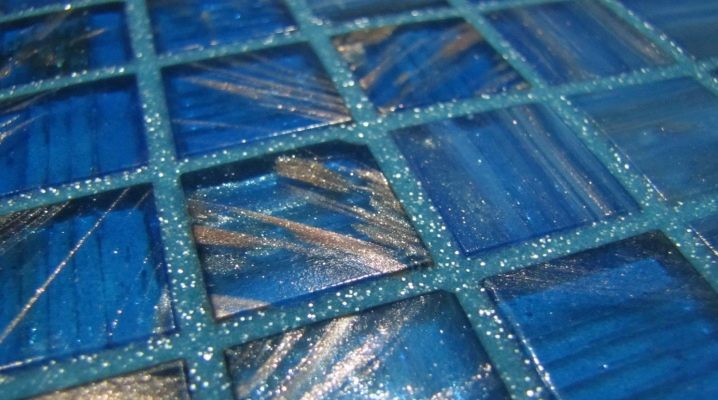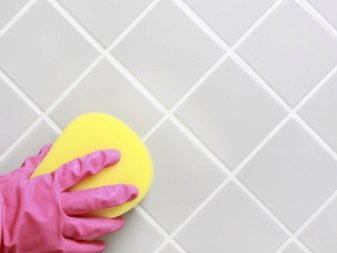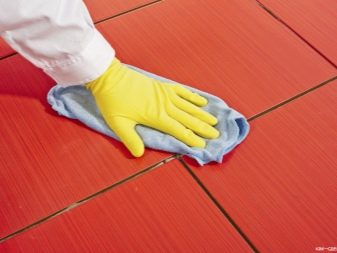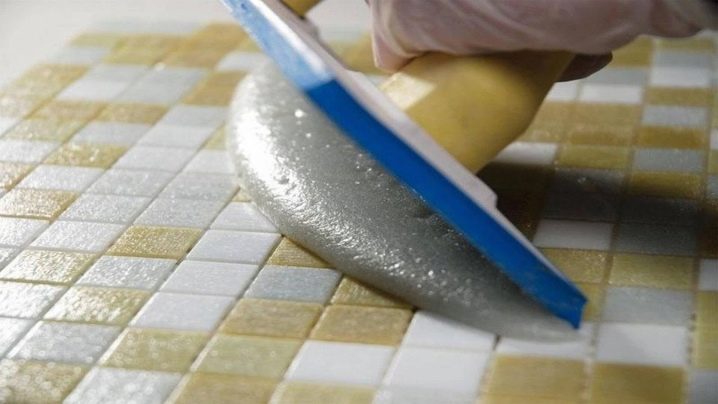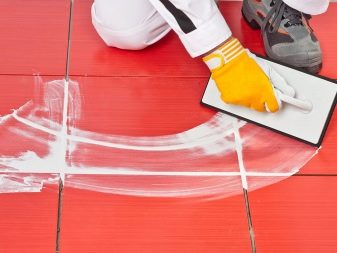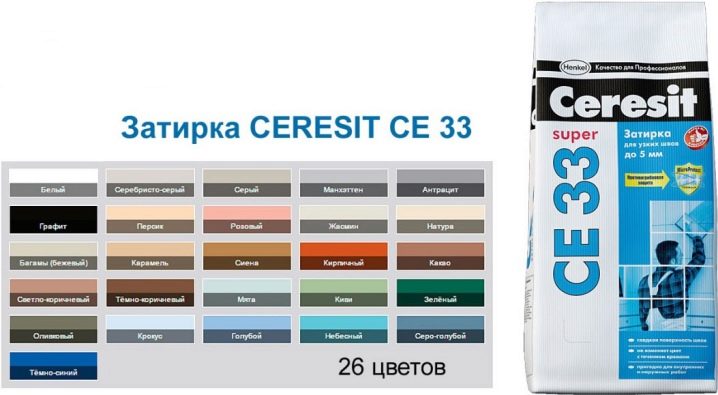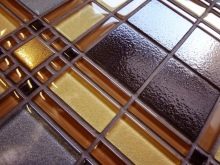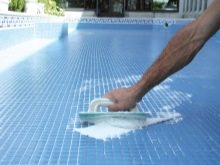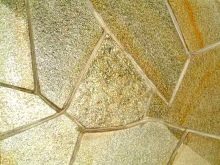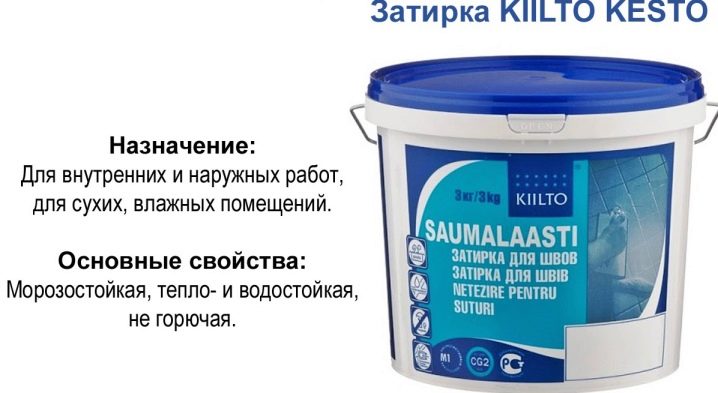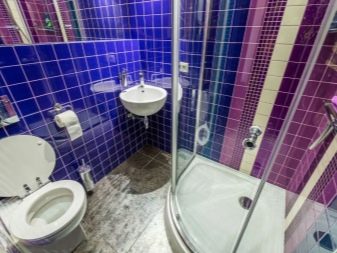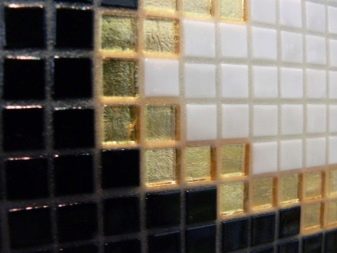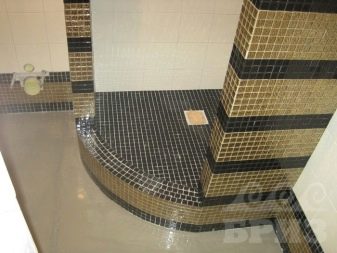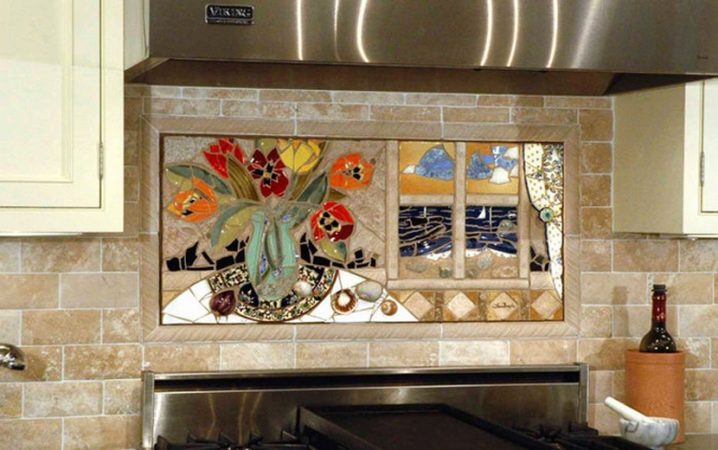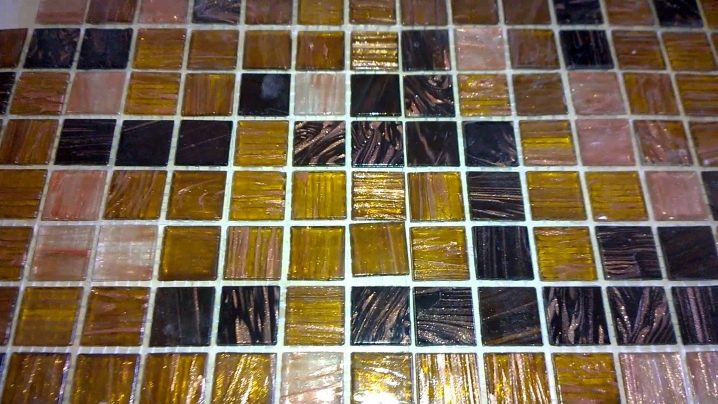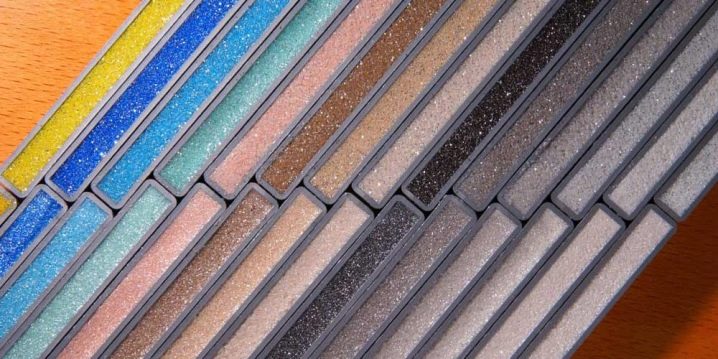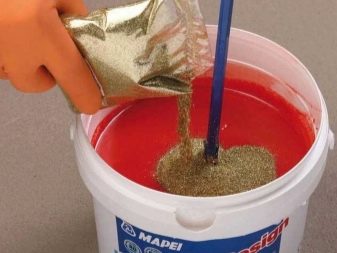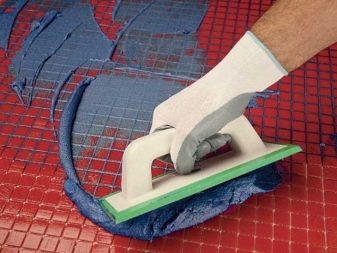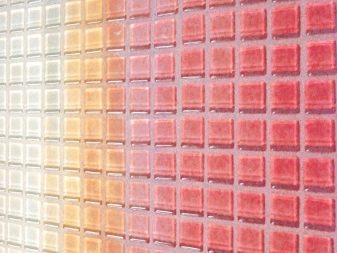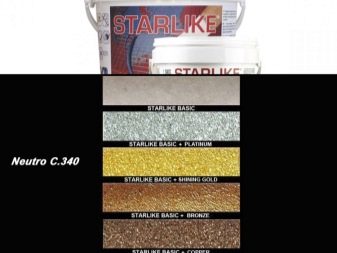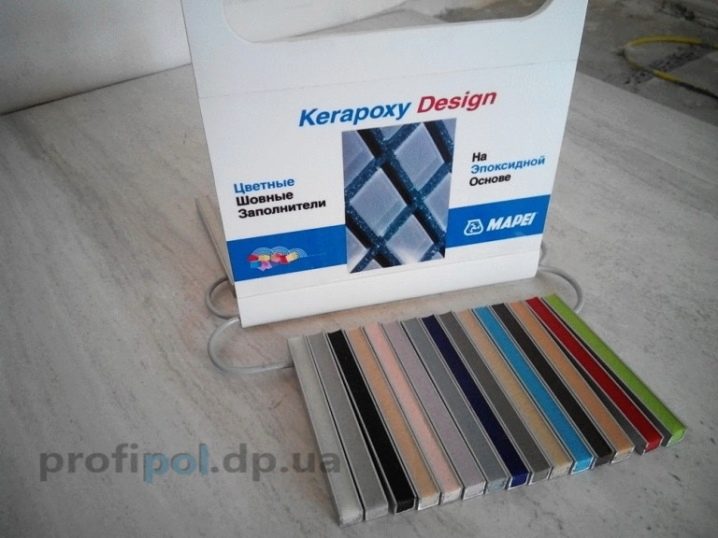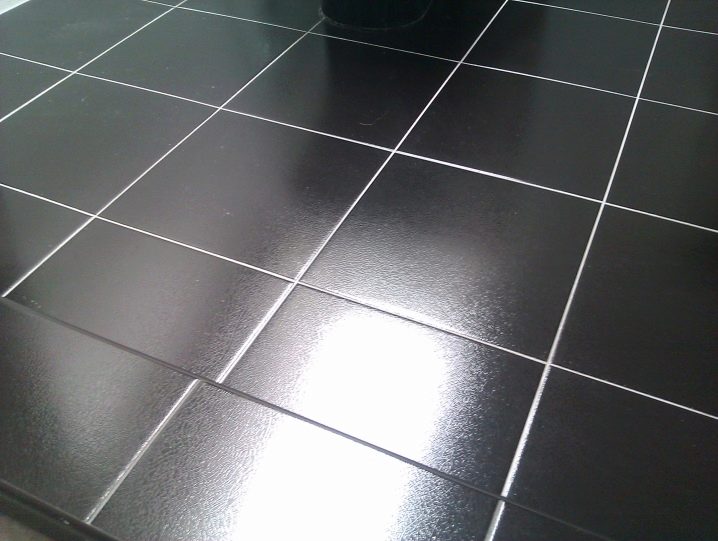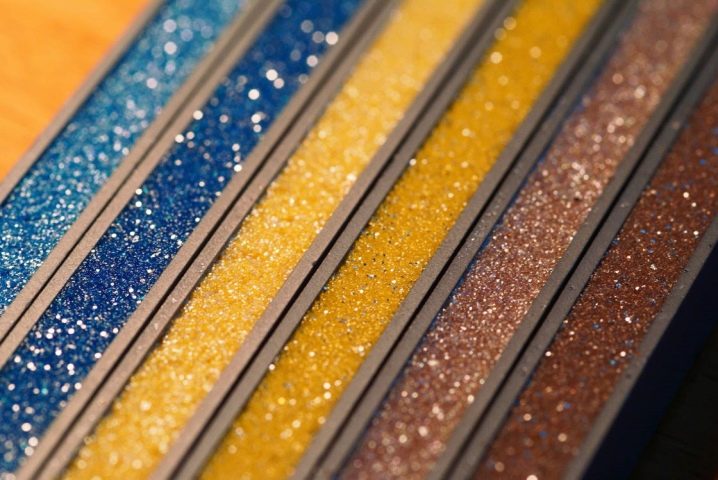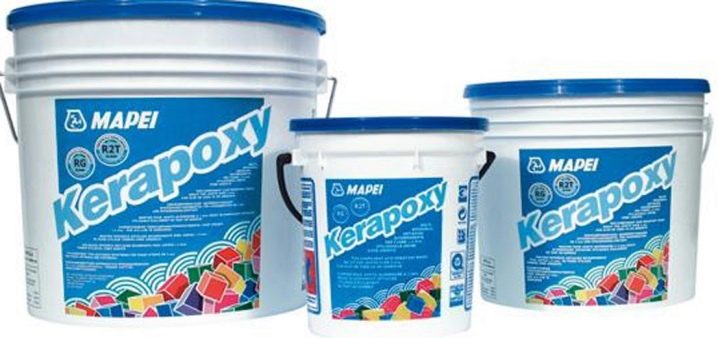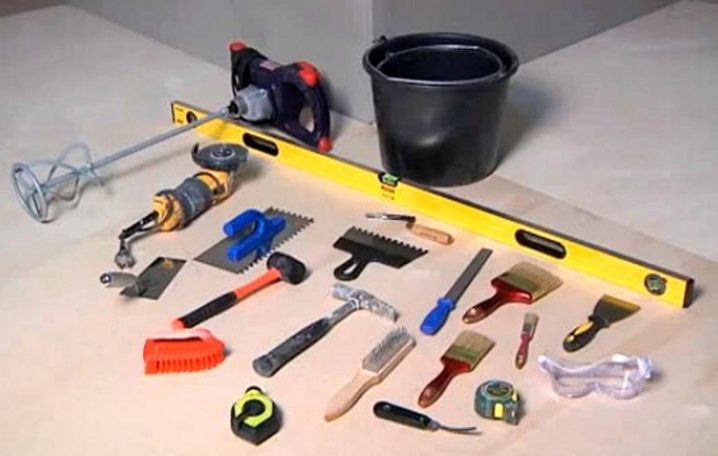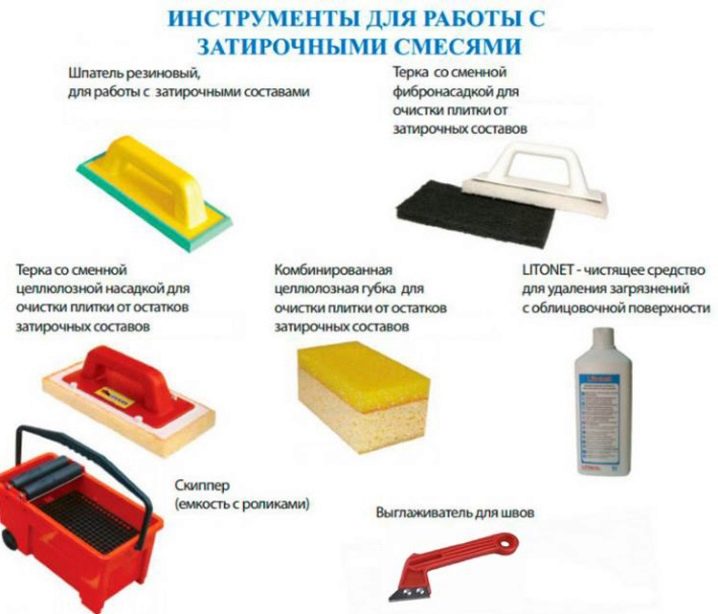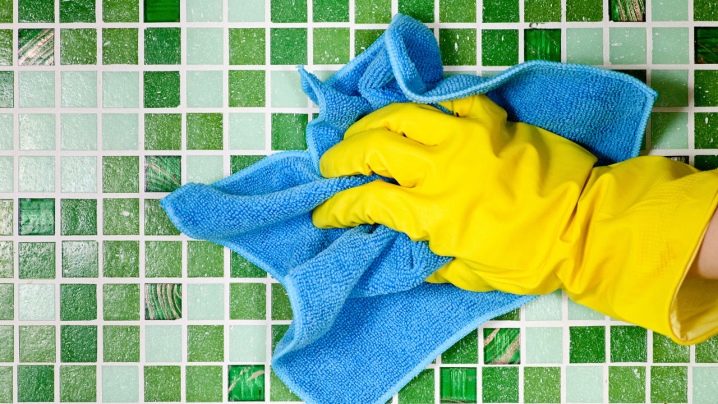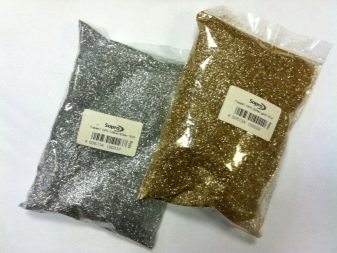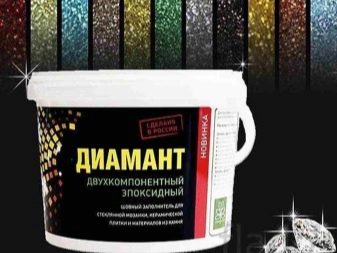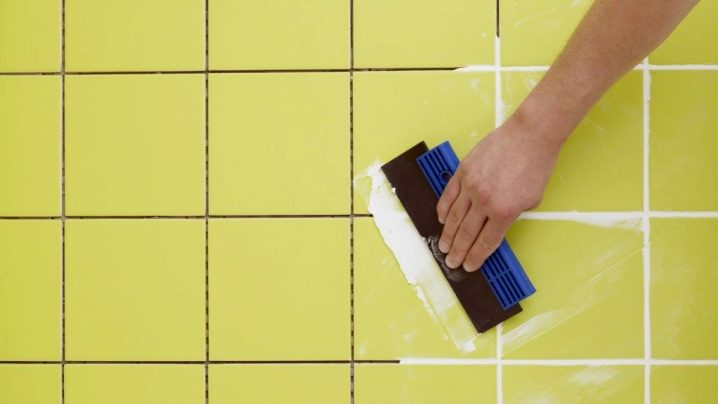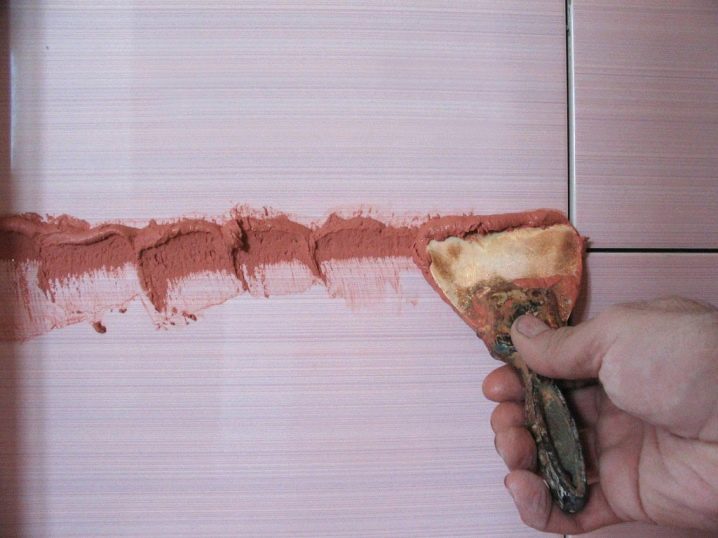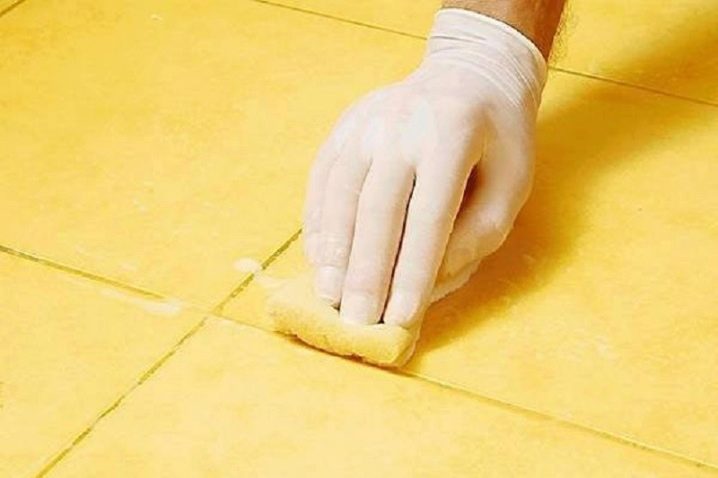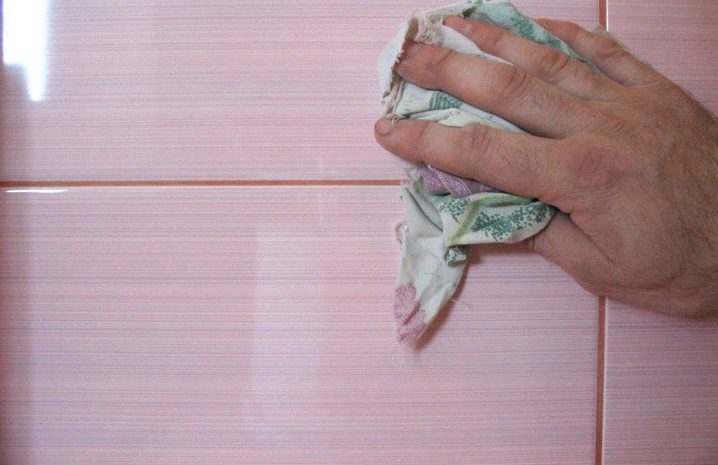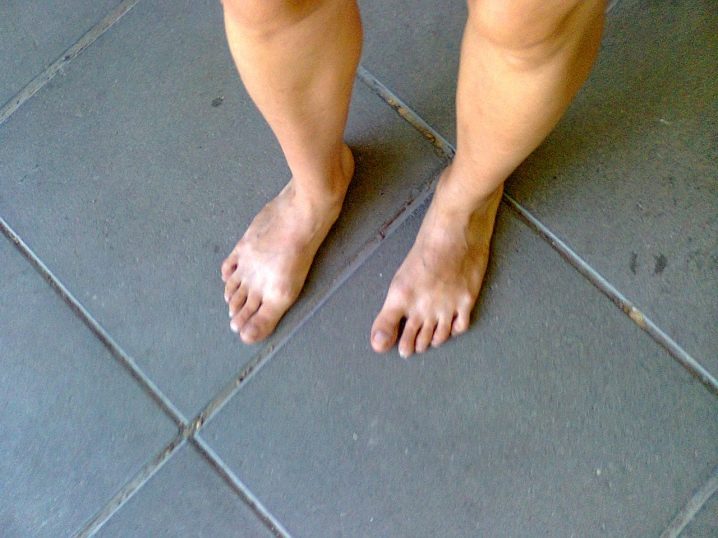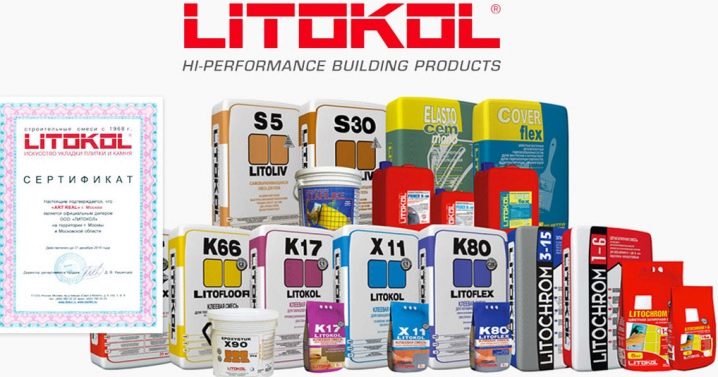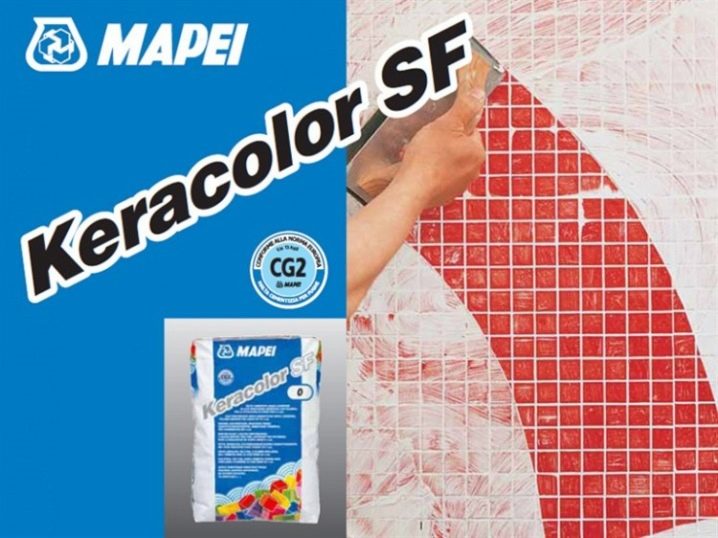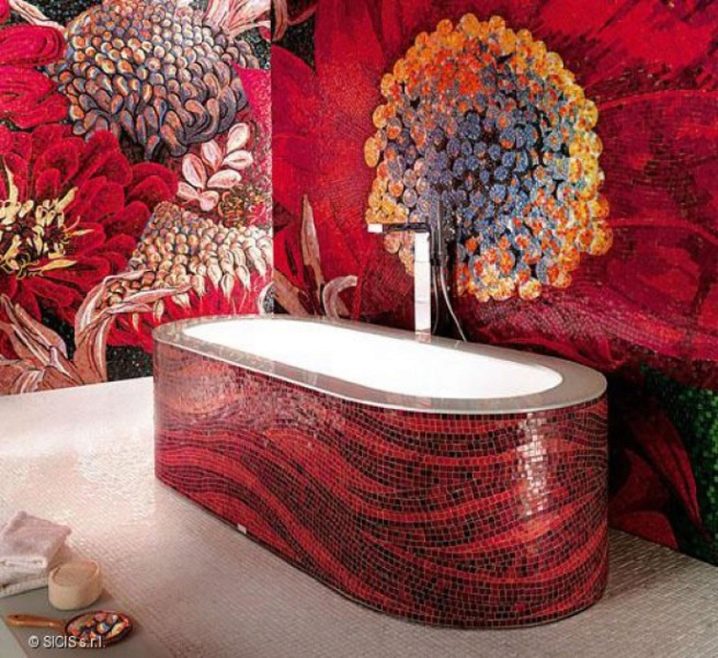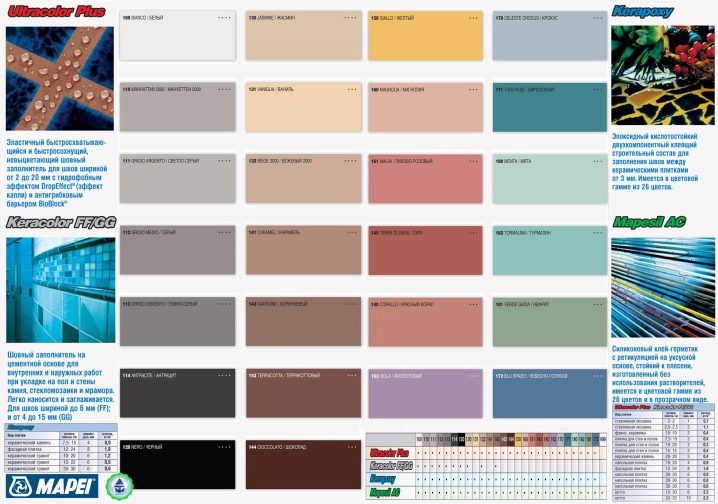Epoxy grout tile: the features of choice
The popularity of tiling of various surfaces is due to the high quality characteristics of such a coating. Tiled walls and floors have high environmental, aesthetic, moisture-resistant, durable qualities. The tile surface is easy to clean, and various cleaning products can be used.
But when laying tiles and other similar finishing materials, cleavage between the elements of finishing is provided. Screeding is used to protect tile joints from moisture and dirt. This seam jointing fugue. The appearance and strength of the entire coating depends on the quality of the finishing work with grout.
Special features
Grout fills the seams between the tiles, preventing the destruction of the finishing coating and protecting it from adverse external influences.
Additionally, the grout has the following features:
- Interferes with hit of dust, garbage under facing;
- Fights against the penetration of water, thus preventing mold and fungi from spreading;
- Hides flaws and uneven masonry;
- Gives strength and tightness to the entire lining;
- Improves the aesthetic appearance of the finished finish due to a variety of colors
Various homogeneous mixtures based on cement and resins are used as grouting materials. Cement grout is a dry or ready-made mixture of Portland cement, polymer plasticizers, sand, modifiers. Cement grout is distinguished by an acceptable price and ease of use. The main disadvantage of cement-based grouting is the low resistance to aggressive chemicals and water, which leads to rapid wear of the joints.
High performance characteristics possess grout mixtures based on resins. Epoxy grout is made from two composite components. The first composition includes epoxy resin, dye pigments, plasticizer, quartz sand. The second part of the grout comes as an additive from an organic catalyst for quickhardening. Mixing these components allows you to get ready-made plastic mixture for finishing trowels.
A variety of color shades allows you to choose the grout to the interior and color of the finishing material. Durability of color throughout the entire period of operation is the main distinguishing feature of epoxy grout.
Epoxy composition is possible for grouting in joints from one millimeter to a couple of centimeters. Manufacturers claim that the service life of grout is half a century without loss of quality characteristics. Epoxy mixture is applied to the seams of different materials - when finishing with ceramic tiles, natural stone, ceramic granite, glass, agglomerate, metal, marble, wood.
Epoxy grout has high performance. After hardening, the seam becomes very durable, poorly amenable to mechanical stress. It does not change under the influence of temperature, ultraviolet, water, acids, rust, grease, dirt and household detergents.
The subtlety of the use of epoxy mixture is that the grout surface must be clean, dry, dust-free, without traces of tile glue or cement.
Scope of application
Since the epoxy mixture has enhanced wear resistance and water repellency, it is ideal for troweling in wet rooms. The mixture is suitable for use outdoors, in rough terrain, in rooms with exposure to the lining of aggressive substances.
Often epoxy grout is used in such cases:
- If the tile keeps within on system of heat-insulated floors;
- In the bathroom;
- In food shops;
- In canteens, cafes;
- In laboratories;
- In the production areas;
- On a kitchen apron or mosaic worktop;
- When facing the pool;
- When finishing shower;
- When finishing the floor in the sauna;
- For grouting tiles on the street, on the balcony, on the veranda or on the terrace;
- When facing the stairs;
- For grouting mosaic or artistic panels.
In whatever case you choose epoxy grout, it will serve for a long time, without deterioration of its properties.
Advantages and disadvantages
All construction and finishing materials have their pros and cons during use and operation. To determine the acquisition, it is necessary to disassemble the main advantages of using epoxy grout in different rooms.
The main ones are:
- It creates a solid facing;
- She has a long operational life;
- It does not absorb water, is absolutely waterproof, drops simply roll off;
- Unaffected by mold;
- Can be used as an adhesive for mosaic;
- Short freeze period;
- Suitable for use on various finishing materials;
- Maintains the big temperature fluctuations from-20 to +100;
- Large selection of colors;
- Does not change color over time and when exposed to sunlight;
- Resistance to acids, alkalis, solvents and other aggressive substances;
- Cracks appear on it after drying;
- Ability to use in interior design solutions
The epoxy grout has excellent performance.
But there are drawbacks, the disadvantages include:
- Expensive finishing material;
- Requires some professional skills in working with grout;
- It is impossible to independently add color color, it will change the consistency of the mixture and affect the time of hardening;
- Difficulty in dismantling.
How to choose?
The trowelled mixture is also called fugue. It is necessary to choose a fugue when facing of a surface is completely ready. The main criterion when choosing a two-component grout is color.There is no absolutely right decision in the selection of colors, the choice is made individually for each interior, depending on the color of the tile, its shape and size.
For a tiled flooring fugue light shade is not the best solution. It is worth choosing darker, non-staining colors to reduce the time spent on cleaning. This applies not only to the floor, but also to other areas with high pollution.
By tradition, for the ceramic tiles of any color choose the same grout or similar in shade. When choosing a fugue color for beige tiles, you can choose contrasting combinations. On a white tile, a stylish solution would be gold or black grout. White classic two-component fugue suitable for any color wall tiles, especially in small rooms.
When grouting mosaic, color picks more carefully. You may need a transparent fugue for artistic design finishes. With the help of special additives from shiny materials, epoxy grout acquires various optical effects.
When selecting a grout, it is necessary to pre-calculate the approximate consumption of the mixture over the entire area in order to gain the desired weight.You can calculate the volume yourself, knowing the length of the seams, the depth of the tile and the distance between the elements. You can also use the trowel consumption table specified in the instructions. Fugue is sold in packs of 1 kg, 2.5 kg, 5 kg and 10 kg. The weight parameter is especially relevant for epoxy since it is very expensive.
You also need to pay attention to the instructions on the size of the seams. It is always written on the package, for which size the grout is suitable.
Without a preliminary study of the technology of the formation of seams with an epoxy compound, it is difficult to do the work of self-grouting. For a successful finish you need to read the instructions for breeding the mixture.
Required tools
After laying the tile or mosaic is grouting.
For professional and high-quality execution of work you need the following tool:
- Spatula made of rubber or a grater with a rubber tip for applying grout to the joints of ceramic tiles;
- Net containers of the required volume for mixing;
- Foam sponge for removing stains and finishing the surface;
- Precision electronic scales for measuring the ratio of components one to nine;
- For the formation of seams and removal of residues of the troweling mixture use a hard sponge, a grater with a cellulose nozzle or a cellulose sponge;
- Capacity for warm water;
- A drill with a mixer nozzle, a wooden smooth stick, a piece of plastic pipe or a spatula for mixing the components of the trowel mix;
- Special chemical solution to remove the remaining residue on the surface;
- Rubber gloves to protect your hands.
On the availability and quality of the tool used depends on the time of the grouting procedure, the epoxy mixture consumption and the solidity of the entire lining. Also a significant role is played by the thoroughness of the final cleaning of the surface with soft sponges and napkins, since it affects the appearance of the finished coating.
How to use?
Epoxy grout is sold in two components. For accurate dosing, measure components on scales in the right ratio. The proportions for the first and second components in grams are indicated in the instructions for epoxy composition. Different manufacturers may have different proportions of the components. It is preferable to combine grout components with an electric drill with a special mixer nozzle at minimum speed.In this case, the mixture will get the minimum amount of air, the temperature with stirring will remain unchanged. At observance of proportions the elastic mix of a necessary consistence turns out.
The term of work with the finished diluted mixture is not more than one hour. In order to avoid hardening in the process of prolonged work, it is necessary to dilute small amounts of trowelled mixture, especially if the worker is overwriting one or he is new. It is recommended to dilute no more than 300 grams of grout at the same time. This nuance will help to completely expend the mixture and avoid the consumption of the rejected material. It is possible to increase the speed of finishing work if one person is engaged in grouting, and the second worker will be cleaning the surface.
When breeding and applying grout, wear rubber gloves on your hands. If the mixture gets on the unprotected area of the skin, you should immediately wash with soap and water. It is necessary to work with a fugue at a temperature not lower than 12 degrees, because in the cold, the solidification time increases and the viscosity changes. This prevents the quality of rubbing and applying the mixture. Finished seams will dry longer.
Fill the seams, applying an epoxy mixture with a spatula or float with a rubber edge on a small area. The area of the grout is chosen so that within 40 minutes of work to finish washing the epoxy mixture from the entire grout area. The remains of the grout is removed by movements on the diagonal of the tile with a soft edge of the grater.
Then immediately rubbing and the formation of seams. It is necessary to form and grind with smooth movements in the form of a figure of eight in order to obtain homogeneous and even smoothing joints. Rinse the grout off the tiles with a wet sponge or sponge immediately after application, often rinsing the material. Late cleaning will cause the mixture to harden and deteriorate the appearance of the coating.
The final cleaning is done with a soft sponge in the same way so that the sponge does not wash out or take the grout from the joints. The more often you rinse the sponge in warm water, the faster the cleaning result will be visible. It must be remembered that it is impossible to enter a neighboring area with a damp sponge, otherwise it will be necessary to dry the untreated area for further grouting. After grouting one plot, proceed to the next, thus erasing the entire facing surface.
The next day, the final cleaning of stains and traces of epoxy grout. You will need a chemical cleaner that is sprayed over the entire work area. Then with a cloth or a clean cloth rubbed on the surface in a circular motion. After the time specified in the instructions, the solution is washed with a soft foam sponge or microfiber cloth, rinsing thoroughly in warm water. If plaque remains on the surface, then repeat the cleaning procedure.
The load on the finished surface can be given in a day. Prior to this, it is impossible to walk on the tile and subject the seams to temperature jumps. On the fifth day, the seams are completely dry and ready for daily use.
Manufacturers and reviews
In the construction market you can find epoxy grout from different manufacturers. The most popular and widely presented are products of the European manufacturer Litokol, the Italian company Mapei and the German concern Ceresit. Manufacturers who focus on the production of different grout, offer a wide selection of colors and a slight price variation.
The difference of the Italian manufacturer is the production of acid-resistant epoxy grout.Mapei Kerapoxy. This grout carries the effects of aggressive acids, it is used even in the treatment of sewage treatment plants. In the line of 26 colors, the willingness of the grout layer to external exposure is three days.
Litokol company produces 5 lines of trowel mixture in which a large range of colors - more than 100 shades of epoxy grout, including transparent. They also produce decorative additives with the effect of gold, nacre, silver, phosphor.
According to consumer reviews, epoxy grout in wet areas fully justifies its use., because it does not form a fungus due to humidity. The color does not change, even after cleaning the surface with strong household products, but it is easier to wash, because the dirt is not absorbed into the surface. It is also noticed that the grouting of the Mapei brand has a more fine-grained structure, smooth in texture. But all the grout to the touch is slightly rough and rough depending on the texture.
Buyers leave feedback about the absence of shrinkage of the trowel mixture, no cracks and irregularities after finishing polishing joints. Epoxy grout retains its properties on heated floors and in outdoor conditions.According to people who lay out mosaic and tile, the epoxy composition of bright colors does not paint porous finishing materials in the process. Professionals successfully use epoxy grout as a cellulose-based mosaic adhesive
Buyers believe the main disadvantage is the high cost of grouting, which is why sometimes you have to use cheaper cement material to the detriment of quality and durability.
How to work with epoxy grout, see the following video.
